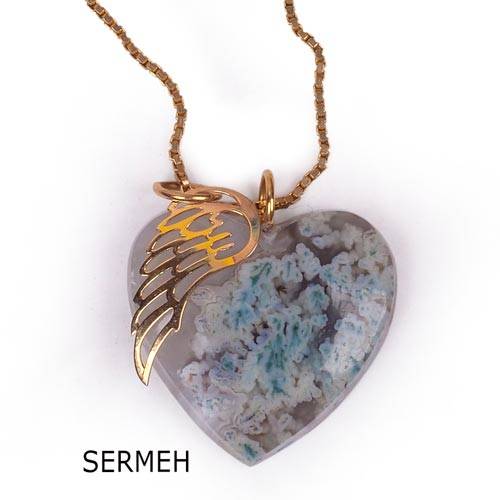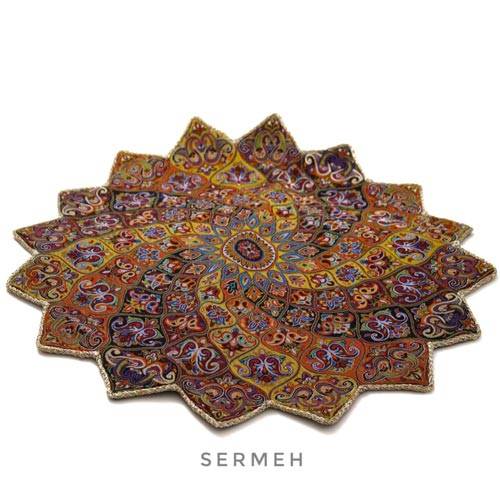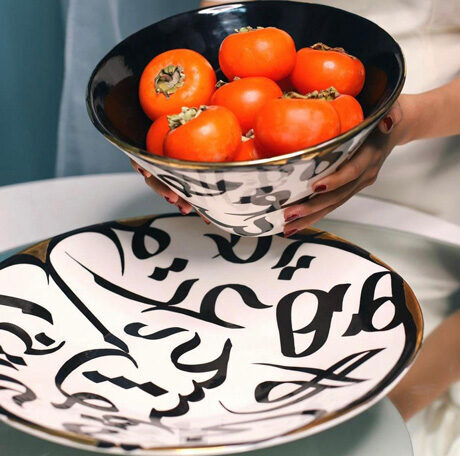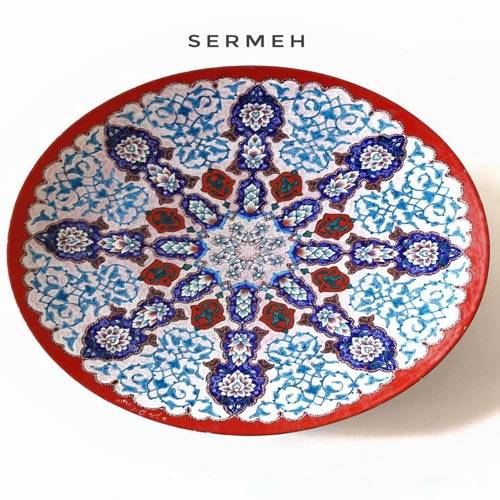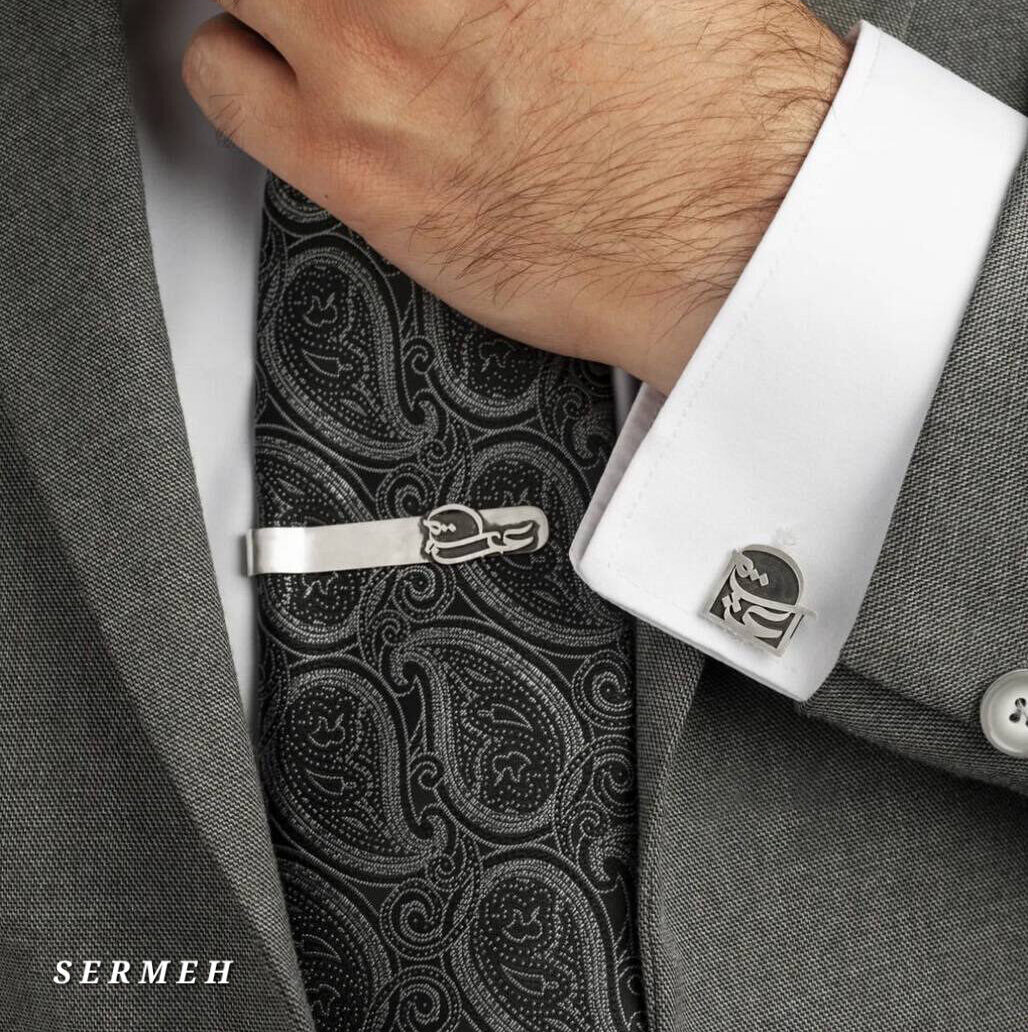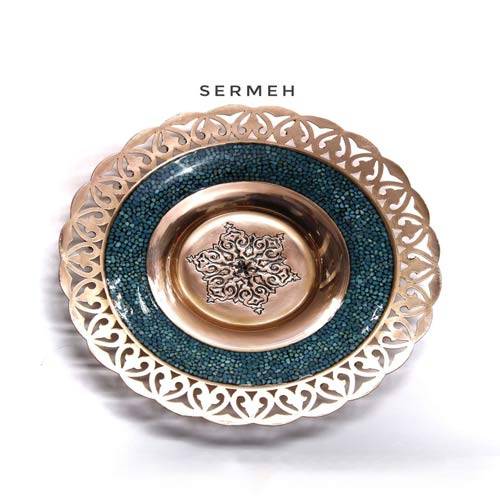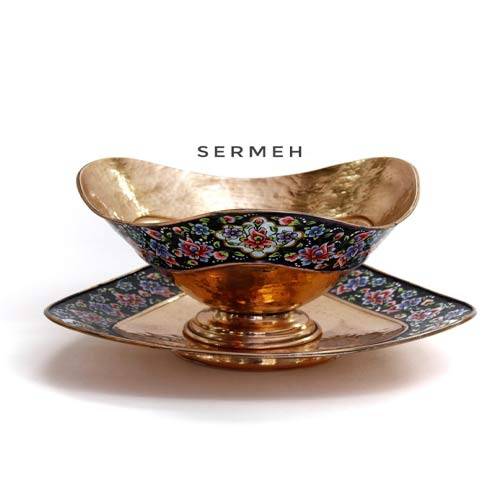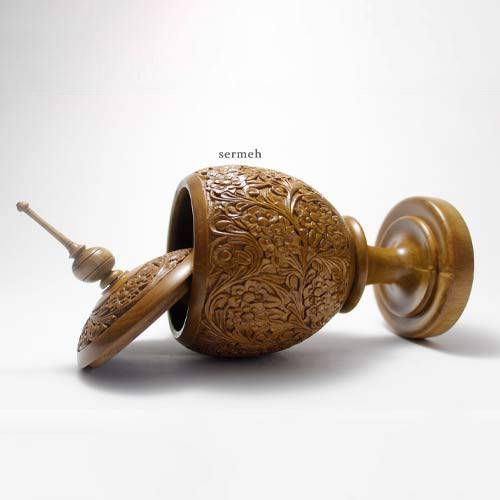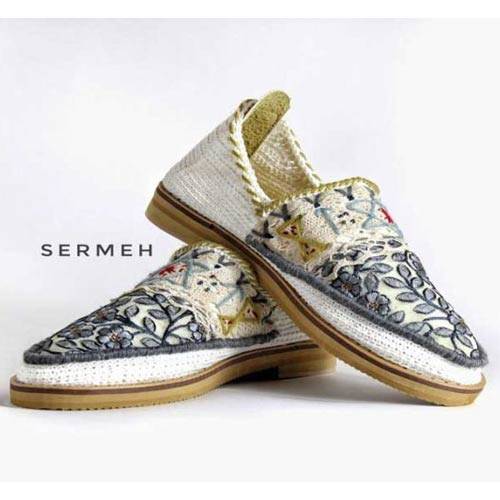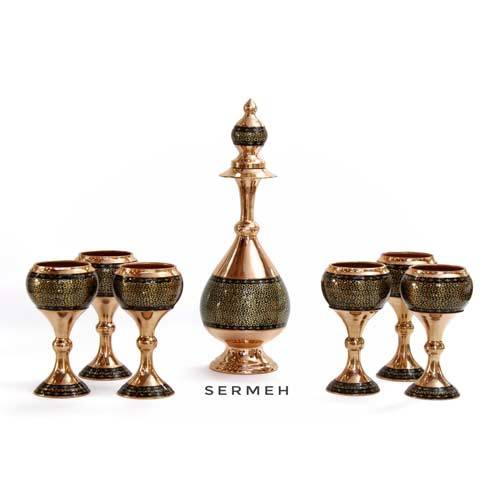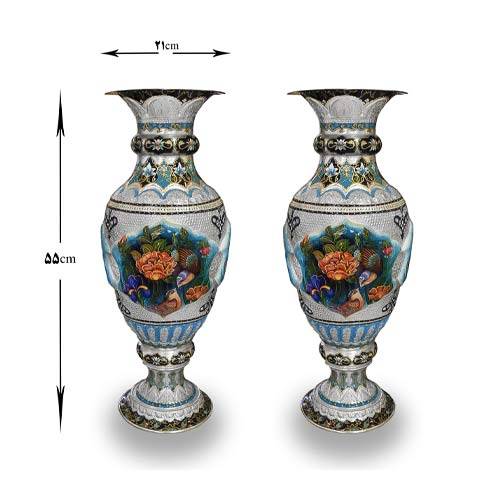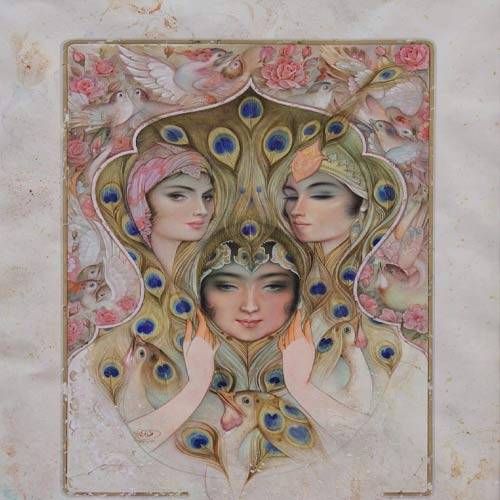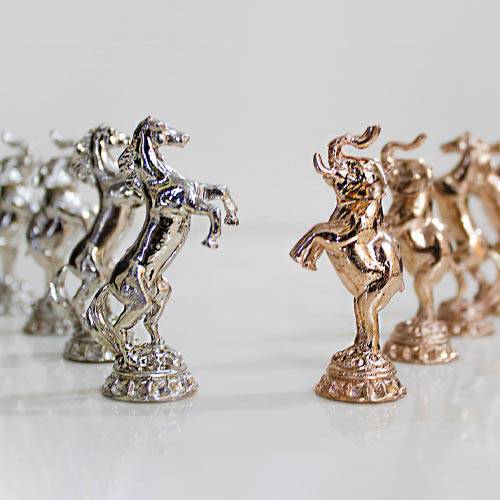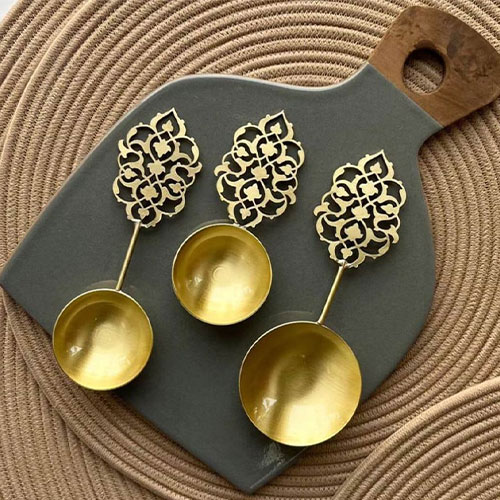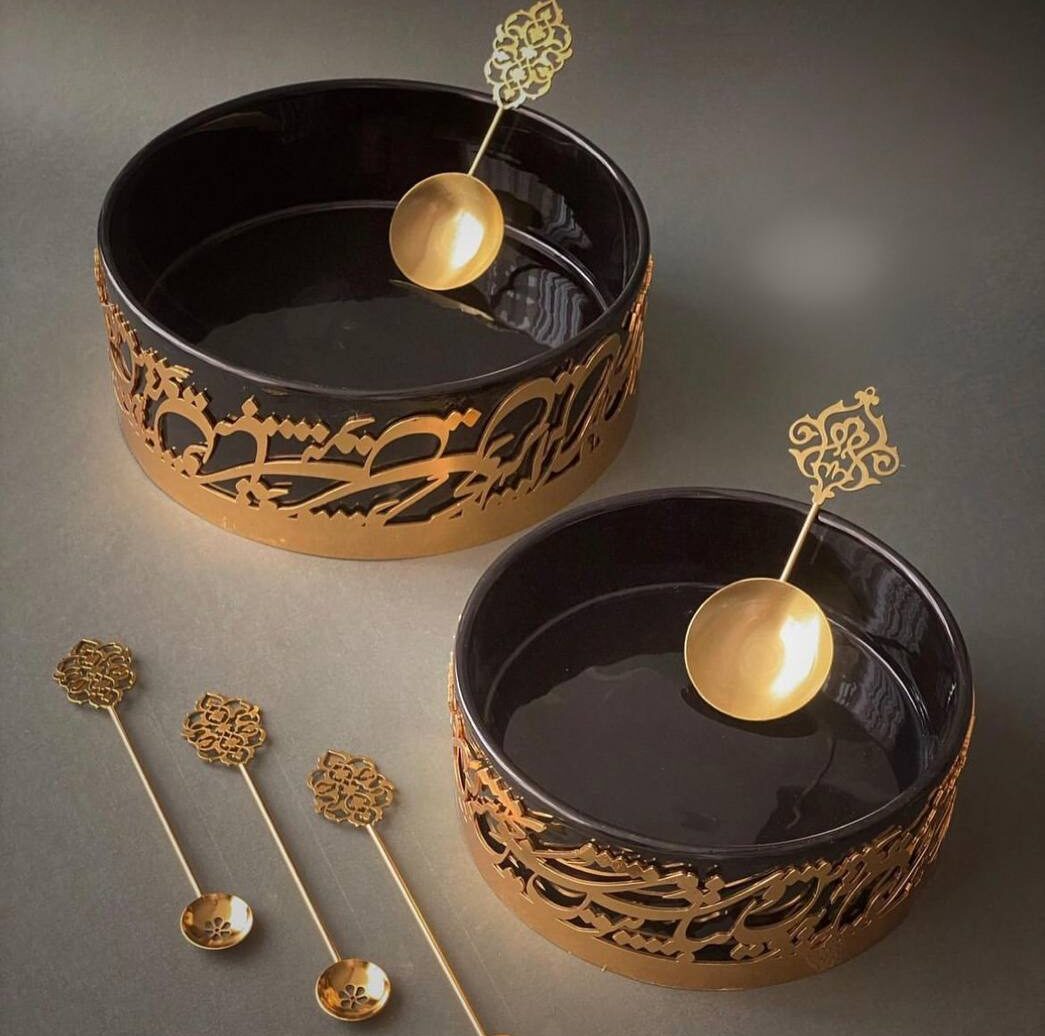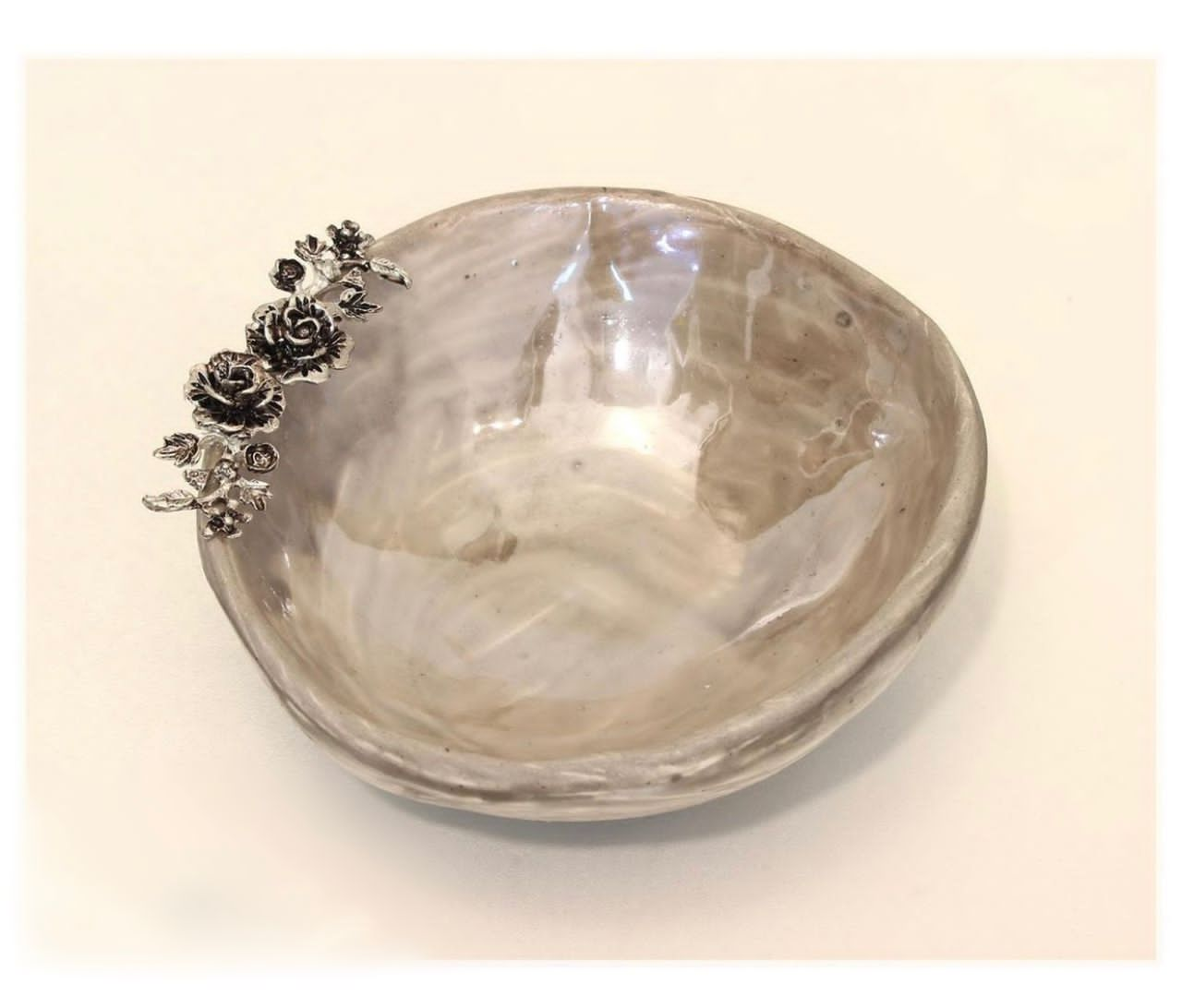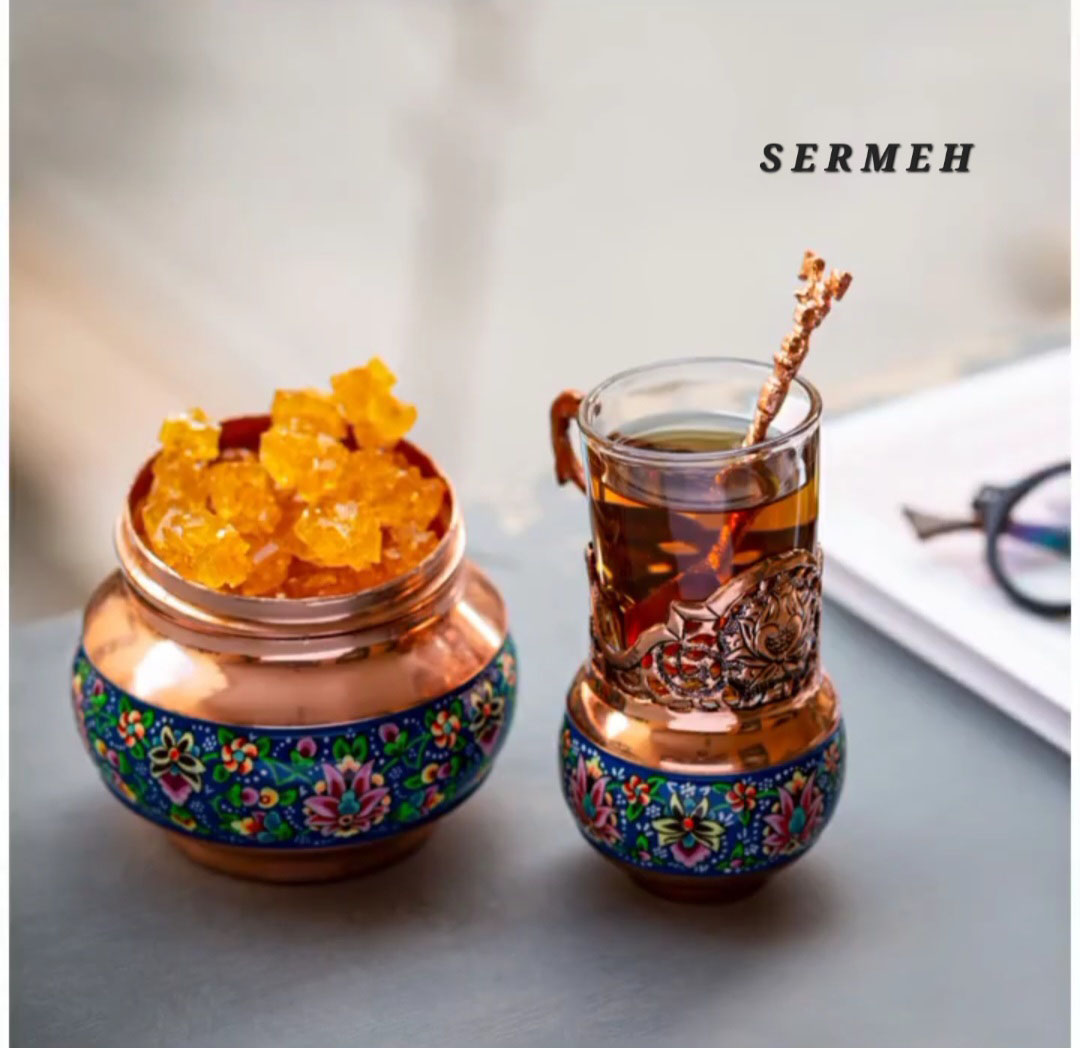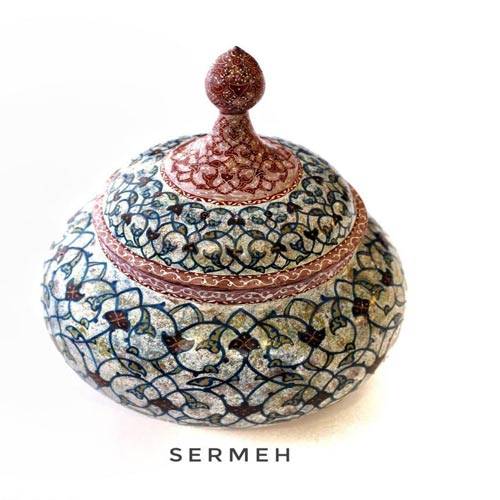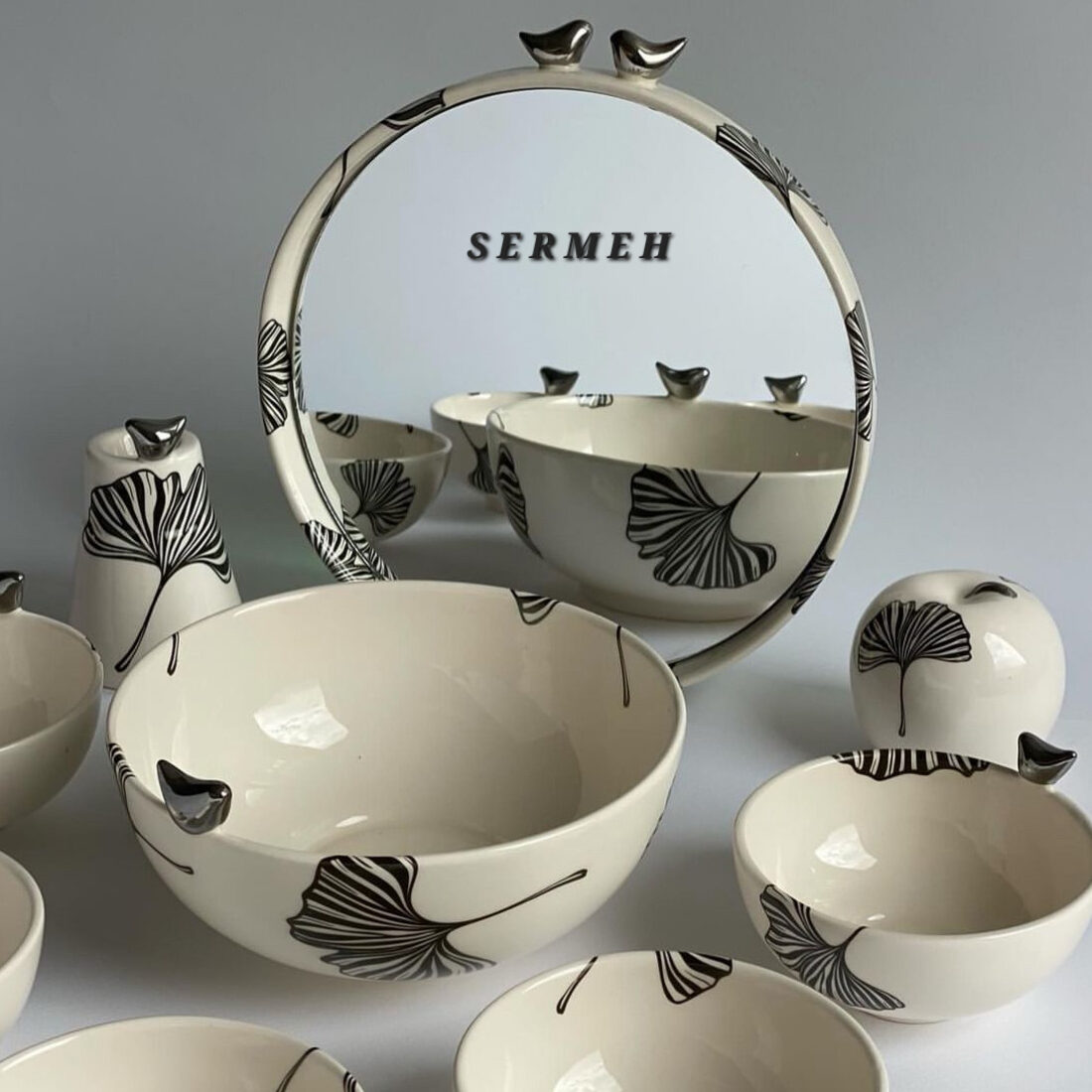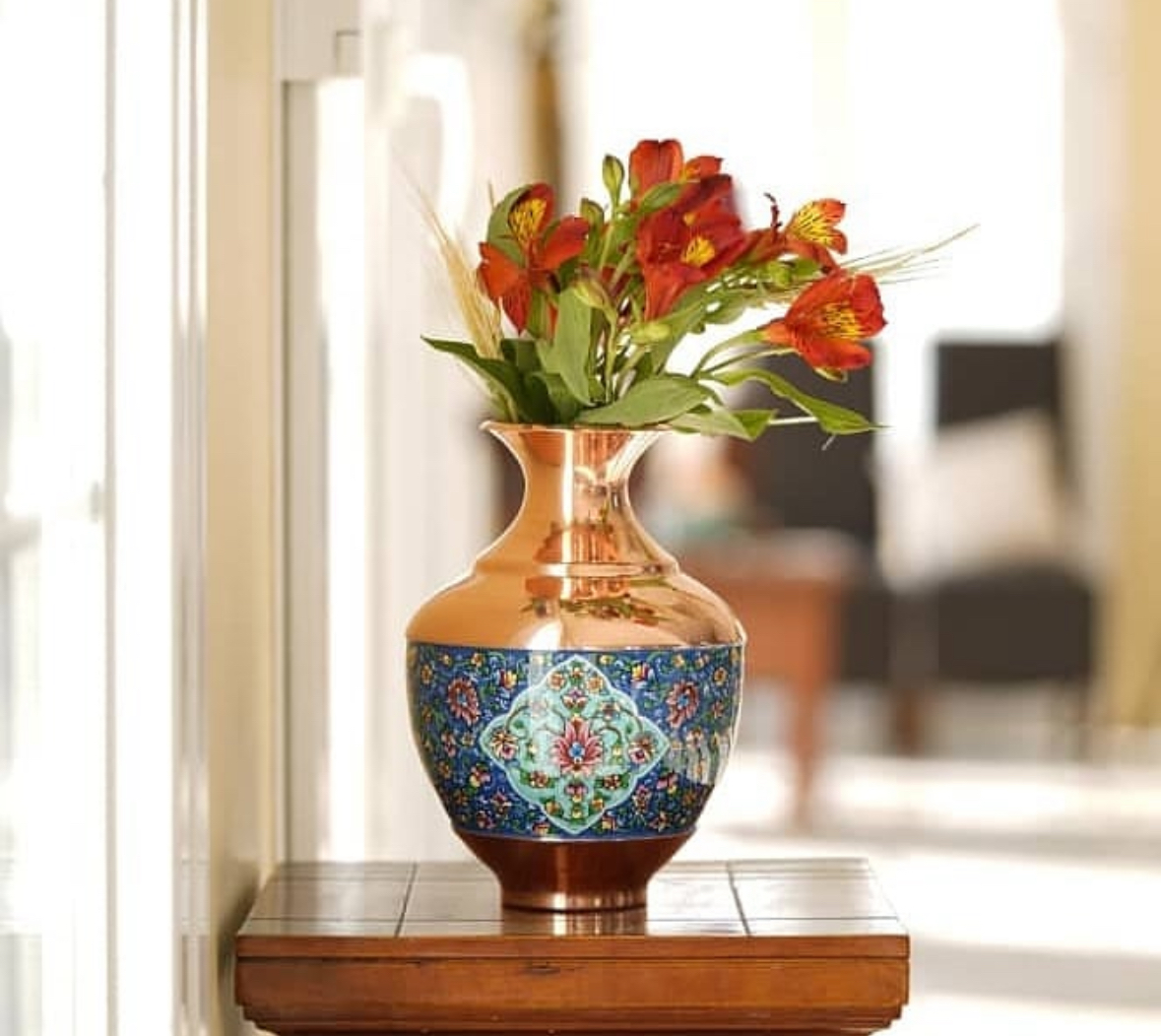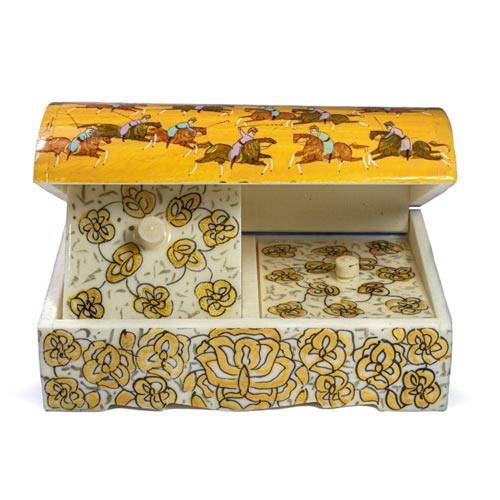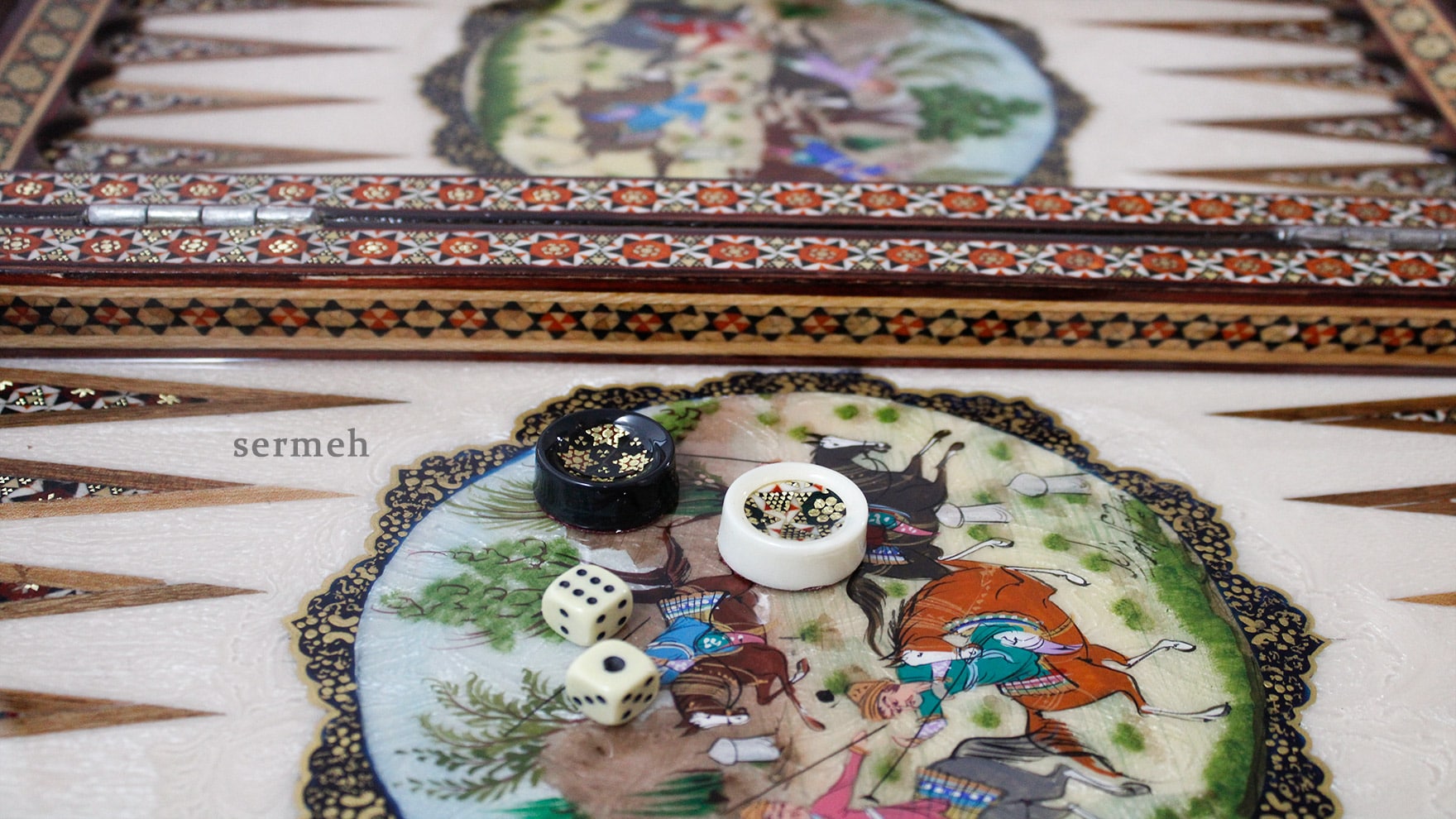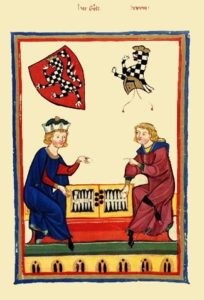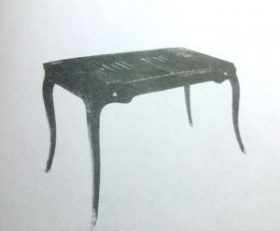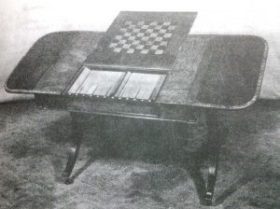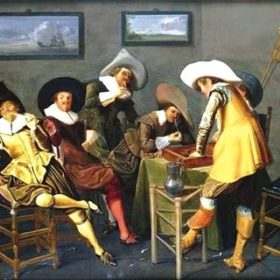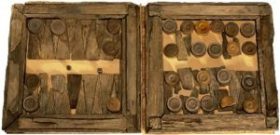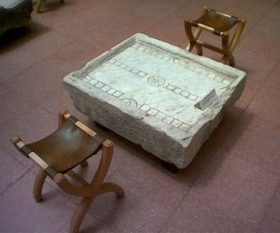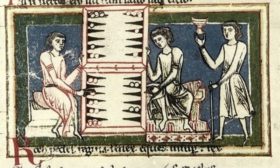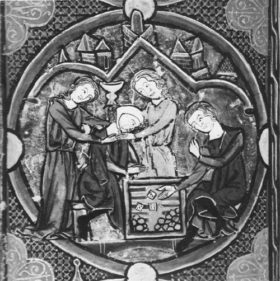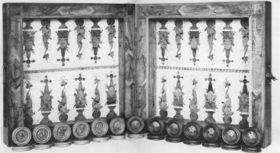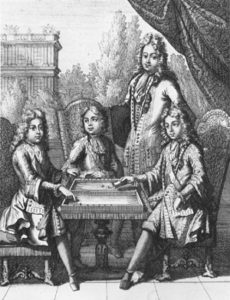Backgammon
Backgammon is the most popular aristocratic game in England in the Middle Ages, and in the diaries of Robert Gloucester, written in the thirteenth century, there are pictures of knights playing this game.
This game, then called a table in English, penetrated other European countries through the aristocracy, and gradually hotel and guest house owners provided this game to attract more customers. Medieval one was twice the size of a chessboard, and its beads were larger than today’s beads.
*BUY ONLINE PERSIAN BACKGAMMON AND CHESS SET*
A wooden closet with a picture of a game painted on its doors. Late 19th century (in the Metropolitan Museum of Art in New York)
Backgammon is played in Medieval times. The game, then called a table in English, penetrated other European countries through the aristocracy, and gradually hotel and guest house owners provided this game to attract more customers. This was twice the size of a chessboard, and its beads were larger than today’s beads. The church, which opposed any gambling, fought against it for many years but was defeated. In 1254, Louis IX, King Louis I of France, banned backgammon for his court, and this ban was later extended to his people.
One hundred and fifty years later, Bishop Tournai considered public backgammon a crime. In Bologna religious schools, playing chess was banned and backgammon set was considered dishonorable, and efforts to eradicate it continued into the late fifteenth century.
During this time, many cities in France, Spain, Italy, and the Netherlands allowed this game, provided the bet amount was not high. But this game was forbidden to students and workers. A patient researcher named Hagi. Murray has written a list of 25 different games that were common in the Middle Ages, and in one of the chapters of the book, entitled Backgammon in the Middle Ages, he writes: In Spain and England, the Emperor game or the English game more than the games It has become popular.
In the 1560s, the owl game was popular in Germany, the Netherlands, and the Scandinavian countries in the work of Werker or Kotra, in Italy the game of Testa, and in France the game of trick truck, which was similar to the Spanish game of last.
An ebony backgammon table with colored ivory beads and bronze bases made in France around 1750 (available at a private museum in New York)
A table made of acacia wood made in England around 1800 AD (available at the Private Museum of Malit and Sanse in London)
Backgammon and the American Declaration of Independence
Although this game was not as popular in the United States as it was in England, it became popular from the 18th century onwards. He wrote the Declaration of Independence of the United States and played backgammon in his spare time.
Documents in the nineteenth-century archives show that one of the sailors on the famous Mississippi ship carried a portable backgammon board with which to take the passengers’ money.
*BUY ONLINE PERSIAN BACKGAMMON AND CHESS SET*
Backgammon game for young and old
In France, the name “trick truck” was applied to the board, perhaps because a sound similar to a “trick truck” was heard when moving the beads on the backgammon board.
An eighteenth-century French writer writes: This game was for the elderly and the young, but it was also common in the king’s court and it was considered a game of nobility and nobility. Shows on a box covered with an Iranian rug.
Backgammon tables in the Palace of Versailles
Describing one of the rooms of the Palace of Versailles, which was the royal palace of Louis XIV and the kings of France after him, the Lomercor newspaper writes: They are for a specific type of game.
A century later, during the reigns of Louis XVI and Marie Antoinette, beautiful, ornate backgammon desks entered the palaces of the aristocracy.
There were two drawers on either side of the table where the backgammon beads were placed. The backgammon board and beads were decorated with ivory and colorful, rare, and expensive woods.
Backgammon in other European and American countries
The Italians call the game of backgammon, the ball of real, and the Spaniards call this game the Rolls Table, which both means royal backgammon, and the Muslims who conquered Spain taught them the game.
In Germany, the same name as Trick Truck was chosen for backgammon, but in a book written about old games and published in 1892, a type of this game called German backgammon is mentioned, which is different from ordinary ones. And the game lasts longer.
In every other European country, including Russia, other types of these games were very close and similar to the German backgammon game. In the 16th century, when the Spaniards discovered and conquered Mexico, they were surprised They found that among the natives of Mexico, there is a kind of game called Patoli, which is very similar to the backgammon game of the Oriental countries.
Gentlemen Smoking and Playing this Game in an Interior by Dirck Hals, 1627
Sinking of the Swedish 64-gun ship of the line Vasa. The ship was recovered in 1961. Amongst the findings was a backgammon board that had been found in one of the officer’s cabins, indicating that had found its way to Sweden.
Game Backgammon in the UK
Backgammon is the most popular aristocratic game in England in the Middle Ages, and in the diaries of Robert Gloucester, written in the thirteenth century, there are pictures of knights playing this game.
This game then called a table in English, penetrated other European countries through the aristocracy, and gradually hotel and guest house owners provided backgammon to attract more customers. Medieval one was twice the size of a chessboard, and its beads were larger than today’s beads.
Ludos Dodsim Scriptum was a popular board game during the Roman Empire. This game is called “Twelve Characters Game”, which seems to refer to three rows of twelve characters on the rescue screen. It is said that the table game is from the generation of the same game and both of these games are similar to today’s backgammon game.
The seventh script game page in the Museum of Alas
The popularity of this game increased in the mid-1960s. Part of this popularity is due to the charisma of Prince Alexis Obolensky, known as the “Father of Modern Backgammon”. He worked hard to structure the game by founding the International Association, which publishes a set of official rules. He also founded the Manhattan Backgammon Club. The club invented the racing system in 1963. He later hosted the first international backgammon tournament in March 1964, earning the franchise, the membership of the game’s celebrities, and the press.
Tables players, from the Carmina Burana
Illumination from a medieval manuscript showing a game similar. (British Museum.)
A board inlaid with masked columns and sea horses. Each of the twenty-six draughtsmen is carved in relief with a flower.
German (Eger); late seventeenth century
The three Royal Princes of France play trictrac; their father, the Dauphin, watches. Engraving by Bonnart, Paris, 1693

